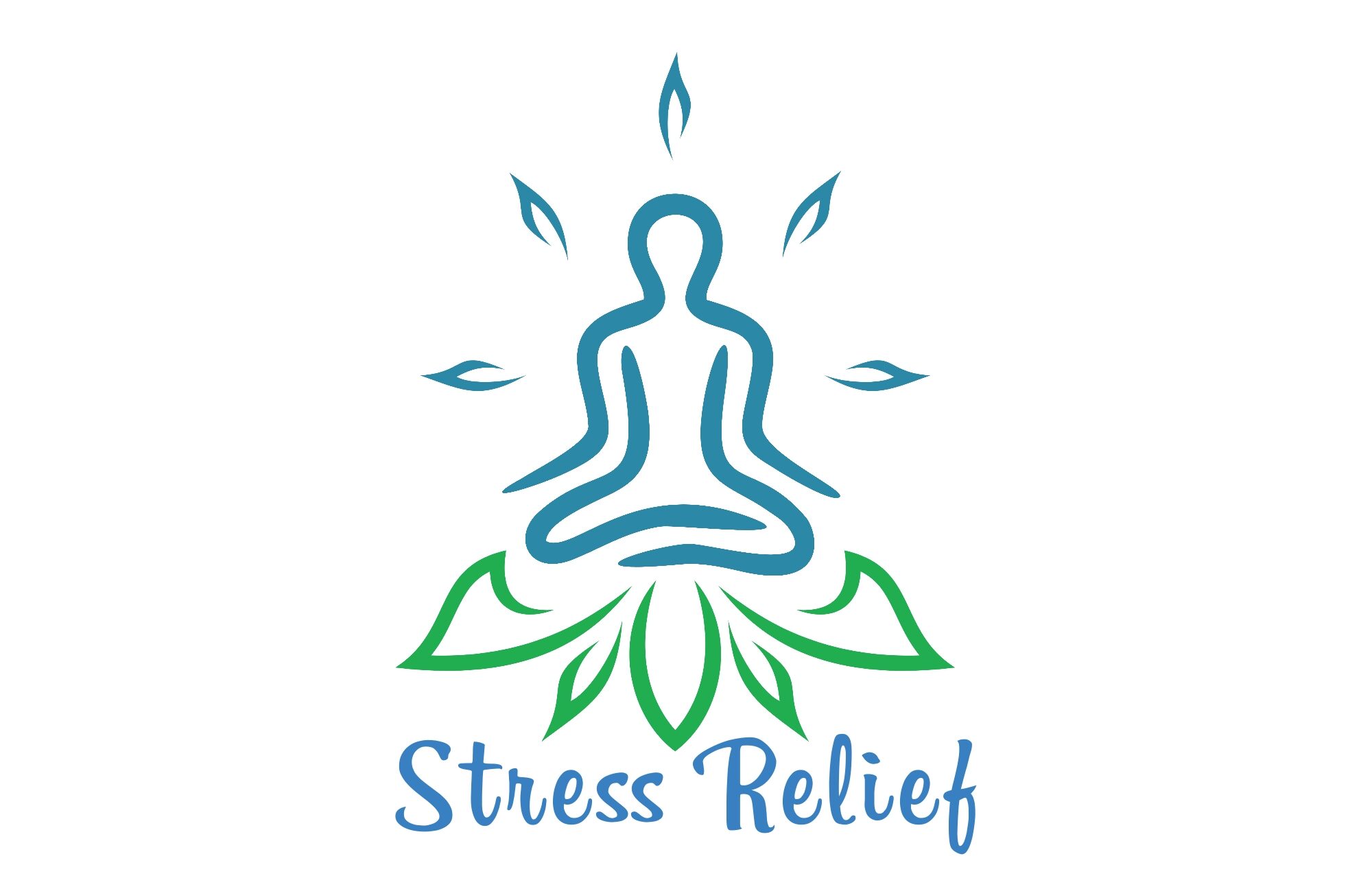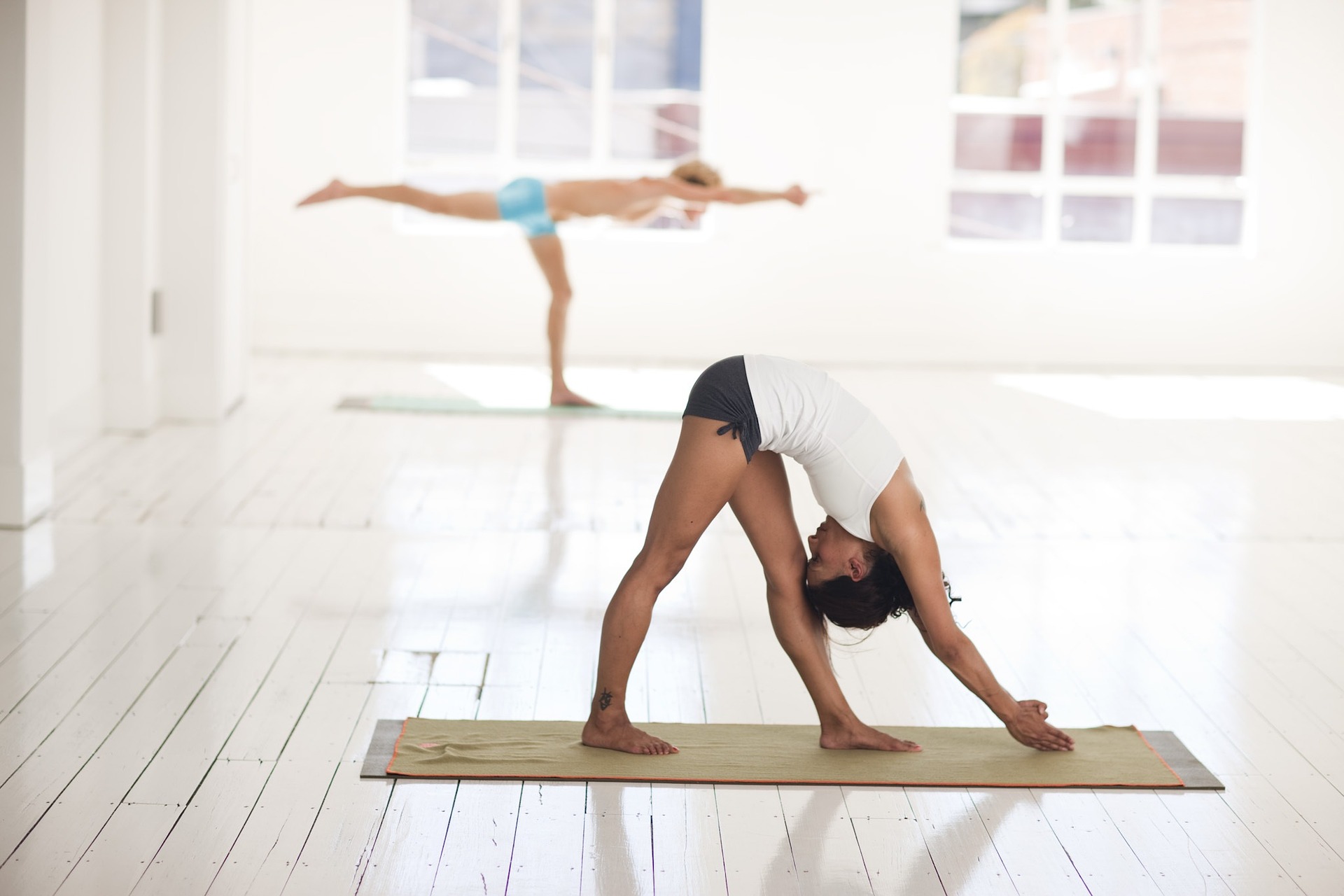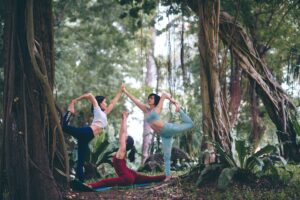Introduction
Stress is an inevitable part of life that can often disrupt our sleep patterns and overall well-being. However, by incorporating yoga into our daily routine, we can find relief from stress and promote better sleep. This article will explore the impact of stress on sleep, the benefits of yoga poses for stress relief and better sleep, and how practicing yoga can improve our overall well-being.
Preparing Your Space and Mind
Before diving into the various yoga poses, it’s essential to prepare both your space and mind for a peaceful practice. Creating a quiet and peaceful environment sets the stage for relaxation and introspection. Find a space where you can practice without distractions and ensure that the lighting is gentle and calming. Dimming the lights or lighting a few candles can add to the tranquility of your space.

Setting intentions for your yoga practice allows you to align your mind and body in preparation for stress relief and better sleep. Take a moment to reflect on what you hope to achieve through your practice, whether it’s finding inner peace or releasing tension. By setting intentions, you create a focused mindset that enhances the effectiveness of the yoga poses.
Breathing and meditation techniques play a significant role in relaxation and stress reduction. Before beginning your yoga session, take a few minutes to engage in deep breathing exercises. Focus on inhaling deeply, allowing your abdomen to expand, and exhaling slowly, releasing any tension held within. Incorporating meditation into your practice can further calm the mind and prepare you for the yoga poses that follow.
1. Gentle Yoga Poses for Stress Relief
When it comes to stress relief, gentle yoga poses provide a soothing and nurturing experience for both the body and mind. Here are five poses that can help alleviate stress:
- Child’s Pose (Balasana)
Child’s Pose is a deeply restful posture that allows you to surrender and let go of any built-up tension. Begin by kneeling on your mat, then slowly lower your torso down, bringing your forehead to rest on the mat. Extend your arms forward or rest them alongside your body, whichever feels most comfortable. Take slow, deep breaths as you relax into the pose, feeling the release of stress and tension with each exhalation.
- Standing Forward Bend (Uttanasana)
Standing Forward Bend is a gentle forward fold that helps calm the mind and release tension from the neck, shoulders, and back. Start in a standing position with your feet hip-width apart. On an exhale, hinge forward from your hips, allowing your upper body to hang freely. Bend your knees slightly if needed to maintain a comfortable stretch. Release any holding in your neck and shoulders, and with each breath, let go of stress and tightness in these areas.

- Extended Triangle Pose (Trikonasana)
Extended Triangle Pose stretches and strengthens the entire body while relieving stress and anxiety. Begin by standing with your feet wider than hip-width apart. Turn your right foot out 90 degrees and your left foot slightly inward. Extend your arms out to the sides parallel to the floor. On an exhale, reach your right arm towards your right foot, maintaining a straight line from your left hand to your left foot. Gently gaze up towards your left hand and breathe deeply, allowing the pose to ease tension and stress from your body.
- Seated Forward Bend (Paschimottanasana)
Seated Forward Bend provides a deep stretch for the spine, hamstrings, and lower back, promoting relaxation and stress relief. Sit on your mat with your legs extended in front of you. On an exhale, hinge forward from your hips, reaching towards your toes. If you can’t reach your toes, use a strap or hold onto your ankles or calves. Keep your spine long and relaxed as you take slow, deep breaths, allowing any stress or tension to release with each exhalation.
- Reclining Bound Angle Pose (Supta Baddha Konasana)
Reclining Bound Angle Pose is a gentle hip opener that soothes the nervous system and promotes deep relaxation. Lie on your back with the soles of your feet together, allowing your knees to fall open to the sides. Place your hands on your belly or extend them alongside your body, palms facing up. Close your eyes and focus on your breath, allowing the pose to melt away any stress or tension in your body.
2. Energizing Yoga Poses for Better Sleep
Finding the balance between relaxation and energization is crucial for promoting better sleep. Here are five yoga poses that can help you unwind and prepare for a restful night:
- Legs-up-the-Wall Pose (Viparita Karani)
Legs-up-the-Wall Pose is a restorative inversion that boosts circulation, calms the nervous system, and promotes a sense of grounding before sleep. Begin by sitting sideways next to a wall. On an exhale, swing your legs up the wall and lie down on your back. Rest your arms alongside your body and close your eyes. Breathe deeply as you let go of the day’s stresses, allowing your body to relax fully into the pose.
- Cat-Cow Pose (Marjaryasana-Bitilasana)
Cat-Cow Pose is a gentle flowing sequence that releases tension in the spine and promotes a sense of grounding. Start on your hands and knees, with your wrists directly under your shoulders and your knees under your hips. On an inhale, lift your chest and tailbone towards the ceiling, arching your back into Cow Pose. On an exhale, round your spine towards the ceiling, dropping your head in Cat Pose. Flow between these two poses, syncing your breath with movement, to release stress and prepare your body for better sleep.

- Supported Bridge Pose (Setu Bandhasana)
Supported Bridge Pose gently opens the chest and hips, counteracting the effects of prolonged sitting and promoting relaxation. Lie on your back with your knees bent and your feet hip-width apart. Place a folded blanket or bolster under your sacrum, lifting your hips slightly. Rest your arms alongside your body, palms facing up. Close your eyes and breathe deeply, allowing any tension or stress to dissolve as you sink deeper into the pose.
- Reclining Spinal Twist (Supta Matsyendrasana)
Reclining Spinal Twist releases tension in the back, shoulders, and hips while aiding in digestion and calming the nervous system. Lie on your back and hug your right knee into your chest. On an exhale, drop your right knee across your body to the left, extending your right arm out to the side. Gently gaze over your right shoulder. Take slow, deep breaths as you feel the stretch and release happening in your spine. Repeat on the other side to fully unwind and prepare for a night of restful sleep.
- Corpse Pose (Savasana)
Corpse Pose is the final relaxation pose that allows the body and mind to integrate the benefits of the yoga practice and prepare for sleep. Lie on your back with your legs extended and your arms resting alongside your body, palms facing up. Close your eyes and allow your breath to return to its natural rhythm. Scan your body for any lingering tension and consciously release it with each breath. Stay in this pose for several minutes, enjoying the deep relaxation and mental clarity it brings.
3. Strengthening Yoga Poses to Relieve Stress and Promote Sleep
In addition to gentle poses, incorporating strengthening poses into your yoga practice can help relieve stress and promote better sleep. Here are five poses that target different areas of the body:
- Tree Pose (Vrksasana)
Tree Pose strengthens the legs, improves balance, and brings a sense of stability and focus. Start by standing tall with your feet hip-width apart. Shift your weight onto your left foot and bring the sole of your right foot to your left inner thigh. Find your balance and bring your hands to your heart or extend them overhead. Take slow, deep breaths as you find strength and stability within the pose, releasing any stress or tension in the process.

- Warrior II Pose (Virabhadrasana II)
Warrior II Pose builds strength in the legs and core while promoting a sense of empowerment and grounding. Begin by standing with your feet wide apart, extending your arms parallel to the floor. Turn your right foot out 90 degrees and align your right heel with the arch of your left foot. Bend your right knee directly above your ankle, keeping your left leg straight. Gaze over your right fingertips and breathe deeply, feeling the strength and stability in your body.
- Bridge Pose (Setu Bandha Sarvangasana)
Bridge Pose strengthens the back, glutes, and hamstrings while opening the chest and shoulders. Lie on your back with your knees bent and your feet hip-width apart. Press your feet into the mat, engaging your glutes and lifting your hips towards the ceiling. Interlace your fingers underneath you, pressing your forearms into the mat and lifting your chest slightly. Breathe deeply as you feel the strength and stability of the pose, letting go of any stress or tension.
- Supported Shoulderstand (Salamba Sarvangasana)
Supported Shoulderstand strengthens the shoulders, core, and legs while soothing the nervous system. Start by lying on your back with your arms alongside your body, palms facing down. Lift your legs towards the ceiling, supporting your lower back with your hands. Place your elbows on the mat and bring your hands to your lower back. Slowly lift your hips and legs, extending them overhead. Find stability in the pose, allowing the blood to flow towards your head, calming the mind and relieving stress.
- Standing Forward Bend Variation (Uttanasana Variation)
Standing Forward Bend Variation strengthens the back and hamstrings while promoting relaxation and grounding. Start in a standing position with your feet hip-width apart. Interlace your hands behind your back, palms together. On an exhale, hinge forward from your hips, allowing your upper body to hang freely while keeping your hands interlaced. Bend your knees slightly if needed to maintain a comfortable stretch. Close your eyes and take slow, deep breaths, releasing any stress or tension.
Summary
Incorporating yoga poses into your daily routine offers numerous benefits for stress relief and better sleep. By practicing the gentle poses, such as Child’s Pose, Standing Forward Bend, Extended Triangle Pose, Seated Forward Bend, and Reclining Bound Angle Pose, you can find relaxation and release tension. Energizing poses like Legs-up-the-Wall Pose, Cat-Cow Pose, Supported Bridge Pose, Reclining Spinal Twist, and Corpse Pose prepare your body for restorative sleep. Strengthening poses like Tree Pose, Warrior II Pose, Bridge Pose, Supported Shoulderstand, and Standing Forward Bend Variation promote both physical and mental strength, further reducing stress. Consistent practice and self-care are key in experiencing the full benefits of these yoga poses.
Frequently Asked Questions (FAQs)
Can yoga really help in reducing stress and improving sleep?
Yes, yoga can be highly effective in reducing stress and improving sleep. The combination of mindfulness, breathwork, and physical movement promotes relaxation, lowers cortisol levels, and calms the nervous system, allowing for better sleep.
How long should one practice yoga before experiencing the benefits?
The benefits of yoga can be felt even after a single session, as it helps to calm the mind and release physical tension. However, for long-term benefits, it is recommended to practice yoga regularly and incorporate it into your daily routine. Consistency is key in experiencing the full range of benefits.
Are there any specific precautions for beginners?
For beginners, it is important to listen to your body and not push yourself beyond your limits. Start with gentle yoga poses and gradually progress as your body becomes more flexible and comfortable. If you have any existing medical conditions, consult with a healthcare professional before starting a new yoga practice.
Can I do these yoga poses before bedtime?
Yes, you can do these yoga poses before bedtime. However, it is advisable to practice them at least 1-2 hours before sleep, as the physical movement may initially increase energy levels before promoting relaxation and better sleep.
Is it necessary to practice all the yoga poses mentioned?
No, it is not necessary to practice all the yoga poses mentioned. You can choose the poses that resonate with you and incorporate them into your practice. The key is to find what works best for your individual needs and preferences.
In conclusion, by incorporating yoga poses into your daily routine, you can effectively reduce stress and improve your sleep quality. Whether you choose gentle poses, energizing poses, or strengthening poses, each contributes to your overall well-being, promoting relaxation and releasing tension. Consistent practice and self-care are key in reaping the full benefits of these yoga poses. So, take a deep breath, roll out your mat, and embark on a journey towards stress relief and better sleep through yoga.




